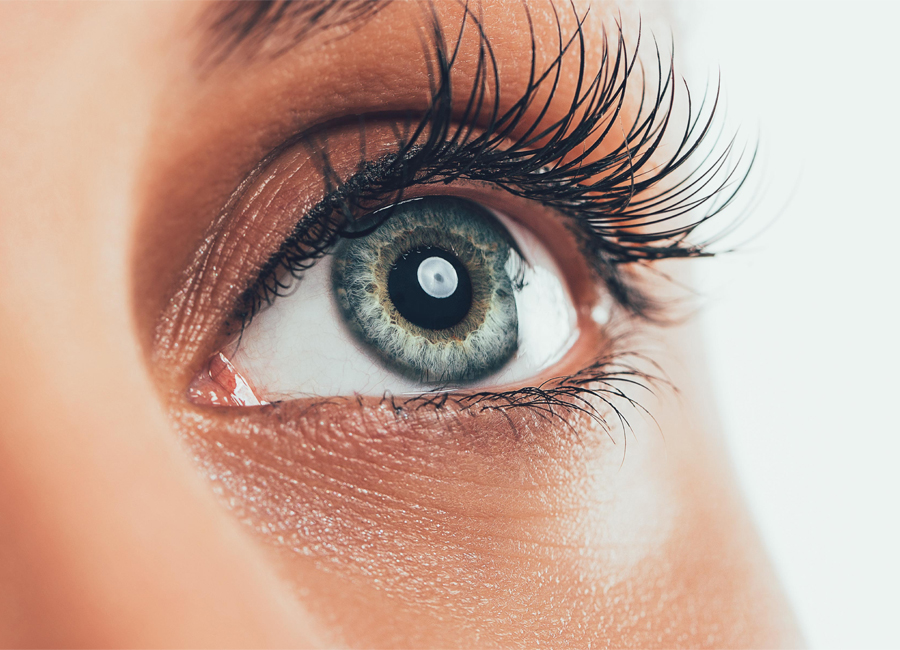How Does the Human Eye Work?

CARP RECOMMENDED PARTNER SPONSORED CONTENT
It all begins with light. The cornea, the eye’s outer transparent covering, is the window to the eye, it focuses light as it passes through it. It plays an important role in focusing the light. Our iris, the coloured portion of our eye, controls the amount of light that enters through our pupil, the black circle in the middle. The muscles that make up the iris help regulate its size according to the light’s intensity. The iris exposes most of the pupil in low light and less of it when there is lots of light.
The light then passes through the aqueous humor, a liquid that contributes to the proper functioning of the eye systems, then the lens. A normal lens is clear and flexible, and is similar to a camera lens. It helps focus on objects near and far by adapting its shape thanks to muscles called ciliary muscles. The lens is round and thickens to see objects close up and becomes thinner to focus on distant objects.
Once focused, the light then passes through a gelatinous substance, the vitreous, to then reach the back of the eye that is called the retina. The retina is made up of millions of light-sensitive nerves called rods and cones. Rods are the photoreceptor cells responsible for our night vision and identify shapes and forms. The cones are responsible for the vision of details, colours and require much more light than the rods. There are three types of cones that each perceives a colour: a blue cone, a green cone and a red cone. The combination of these three colour perceptions and the interpretation of our brains allow us to see millions of colours. The rods and cones then transmit their signals to the neurons that form the optic nerve, which in turn transmits the signal to the occipital lobe of the brain. The brain then translates the messages and interprets what your eyes see. Now, how complex is that?!
In order to keep all of the different layers of our eyes functioning properly, here are five tips on how to maintain healthy eyes:
1. Get your eyes checked! An annual eye exam will not only determine if your eyesight has changed but can also help identify potential eye diseases and provide insight on your overall health.
2. Eat right! A healthy diet filled with nutrients such as omega-3 fatty acids, vitamins A, B and D, lutein and zeaxanthin will maintain your eye’s health and help prevent eye diseases. Need recipe ideas, we’ve got you covered!
3. Stay in shape! No need to join the local gym, but do be mindful to include a fast-paced walk in your day or go up a few flights of stairs instead of taking the elevator. The goal is to help you maintain a healthy weight and lifestyle.
4. Your eyes need some rest too! We spend so many hours in our busy days looking at digital screens that we sometimes forget to give our eyes a break. Follow the 20-20-20 rule to provide them with some relief: every 20 minutes look away from your screen at distance of 20 feet for 20 seconds.
5. Wear your shades! The sun’s UV rays can be harmful to the delicate parts of our eyes, in order to protect them from the sun’s exposure; we suggest a quality pair of sunglasses.
At IRIS, we want you to experience better vision. Drop into your nearest location to see our professionals.
CARP members receive exceptional benefits at IRIS:
- $150 towards any complete pair of prescription eyewear (frame and lenses valued at $250 or more) or prescription sunglasses
- $50 towards the purchase of an annual supply of contact lenses
- $50 towards non-prescription sunglasses valued at $100 or more
- $500 towards vision correction procedures at our ophthalmology clinic in Laval, Quebec
- $25 towards the purchase of 3 or more bottles of Eye Omega Benefits 240 Gel Caps
Register with CARP and receive your IRIS Benefits. Visit www.carp.ca.

